Category: Recommended Reading
Yoga
Clinton Caward at the Sydney Review of Books:
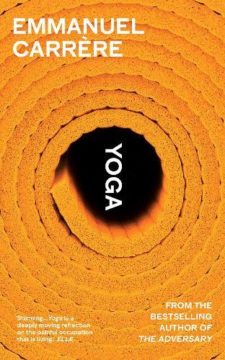 Yoga depicts Carrère’s third major depressive crisis. His first followed the success of his fifth novel, The Moustache (1986) from which he recovered by writing a biography of Phillip K Dick. His breakthrough work came in 1993 when he was drawn to the case of Jean-Claude Romand, who had pretended he was a doctor at the World Health Organisation for eighteen years, and on the cusp of having his fraud exposed, murdered his entire family. Carrère had no idea when he followed the journalistic throng to Romand’s little French village just how many years he’d spend trying to narrativize the murders in the style of Capote’s In Cold Blood. But how to do it? He didn’t want his intrusive ‘I’ to appear on the page, drawing attention to itself. Not yet, anyway. The author should be everywhere present but nowhere visible, Flaubert, one of his role models, had proclaimed. After seven years of bashing his head against Capote, he gave up and sought closure by writing a conversational letter to himself about all he’d been through.
Yoga depicts Carrère’s third major depressive crisis. His first followed the success of his fifth novel, The Moustache (1986) from which he recovered by writing a biography of Phillip K Dick. His breakthrough work came in 1993 when he was drawn to the case of Jean-Claude Romand, who had pretended he was a doctor at the World Health Organisation for eighteen years, and on the cusp of having his fraud exposed, murdered his entire family. Carrère had no idea when he followed the journalistic throng to Romand’s little French village just how many years he’d spend trying to narrativize the murders in the style of Capote’s In Cold Blood. But how to do it? He didn’t want his intrusive ‘I’ to appear on the page, drawing attention to itself. Not yet, anyway. The author should be everywhere present but nowhere visible, Flaubert, one of his role models, had proclaimed. After seven years of bashing his head against Capote, he gave up and sought closure by writing a conversational letter to himself about all he’d been through.
This message to self about the Romand case, became The Adversary, (2000) a non-fiction book which launched Carrère’s use of himself as a character. The story, framed by his struggle to write the book, unexpectedly liberated his voice. ‘It’s the first time you hear my adult voice’, he told the Paris Review.
more here.
Maths And Literature
Rohan Silva at The Guardian:
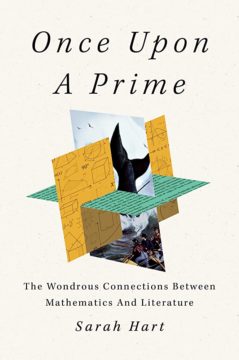 “The universe (which others call the Library) is composed of an indefinite, perhaps infinite number of hexagonal galleries.” That’s how Jorge Luis Borges starts The Library of Babel, beloved by maths geeks and book nerds alike for the way it toys with the mathematical concept of infinity.
“The universe (which others call the Library) is composed of an indefinite, perhaps infinite number of hexagonal galleries.” That’s how Jorge Luis Borges starts The Library of Babel, beloved by maths geeks and book nerds alike for the way it toys with the mathematical concept of infinity.
I liked the short story so much I nicked its main idea when I started my Libreria bookshop, blanketing the store’s insides with mirrors to trick you into thinking you are in a “perhaps infinite” space. (The mirrors require a near infinite amount of cleaning, but there we go. As for maths professor Sarah Hart, she’s so enthralled by the ways her academic field has enriched the work of poets and novelists that it is the subject of her ebullient debut book. “By seeing mathematics and literature as complementary parts of the same quest to understand human life and our place in the universe, we immeasurably enrich both fields,” she writes.
more here.
Saturday Poem
Cartoon Physics, part 1
Children under, say, ten, shouldn’t know
that the universe is ever-expanding,
inexorably pushing into the vacuum, galaxies
swallowed by galaxies, whole
solar systems collapsing, all of it
acted out in silence. At ten we are still learning
the rules of cartoon animation,
that if a man draws a door on a rock
only he can pass through it.
Anyone else who tries
will crash into the rock. Ten-year-olds
should stick with burning houses, car wrecks,
ships going down—earthbound, tangible
disasters, arenas
where they can be heroes. You can run
back into a burning house, sinking ships
have lifeboats, the trucks will come
with their ladders, if you jump
you will be saved. A child
places her hand on the roof of a schoolbus,
& drives across a city of sand. She knows
the exact spot it will skid, at which point
the bridge will give, who will swim to safety
& who will be pulled under by sharks. She will learn
that if a man runs off the edge of a cliff
he will not fall
until he notices his mistake.
by Nick Flynn
from: Some Ether.
Graywolf Press, 2000
When Did Clothing Originate?
Ian Gilligan in Smithsonian:
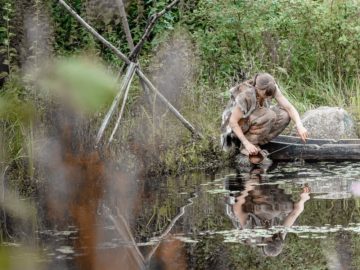 Though many gaps in the story remain, the emerging evidence suggests clothing really had two origins: first for biological needs, then cultural. Archaeologists who study the Paleolithic or Stone Age tend to ignore clothing. Perhaps this isn’t surprising, considering not a single shred has survived from this ice age era between roughly 2.6 million and 12,000 years ago. Archaeologists are reluctant to look for something they will never find.
Though many gaps in the story remain, the emerging evidence suggests clothing really had two origins: first for biological needs, then cultural. Archaeologists who study the Paleolithic or Stone Age tend to ignore clothing. Perhaps this isn’t surprising, considering not a single shred has survived from this ice age era between roughly 2.6 million and 12,000 years ago. Archaeologists are reluctant to look for something they will never find.
Stone Age clothing may be invisible to archaeology, but that does not mean Paleolithic clothing origins cannot be investigated scientifically. For instance, fossils show humans inhabited ice age Eurasia when the frigid windchill reduced safe exposure times to an hour or two. Clearly, those people had adequate clothes. And, fortunately, tools used to make clothing, such as sewing needles, provide some tangible—albeit indirect—evidence.
It’s also helpful to distinguish between simple and complex clothing. Simple clothes hang loose, such as capes, cloaks or loincloths. They can be warm—a drapey fur cloak, for instance—but simple clothes are prone to wind penetration. Complex clothes hug the body snuggly, usually with separate sleeves or pantlegs. Also, complex clothes may have multiple layers.
More here.
How The British Took Over India
Note: (For Arfa and Bhaijan with love)
Friday, April 28, 2023
Ryan Ruby on Literary Criticism and the Internet
Ryan Ruby in Vinduet:
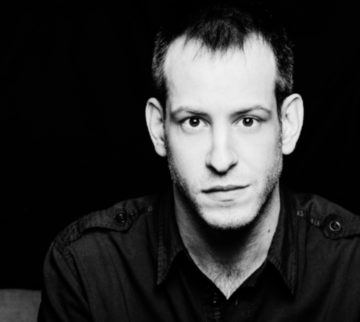 On December 1, 2021, I tweeted: «Earlier this year I argued that we are living in a golden age of popular criticism. To prove my point … here’s the tip of the iceberg: my list of 21 of the best essays, reviews, and criticism published in 2021.»
On December 1, 2021, I tweeted: «Earlier this year I argued that we are living in a golden age of popular criticism. To prove my point … here’s the tip of the iceberg: my list of 21 of the best essays, reviews, and criticism published in 2021.»
The thread of 21 essays that followed were warmly received, which came as something of a surprise since any optimism about contemporary cultural production tends to be regarded as suspect, even controversial. If you spend any time in the Anglophone public sphere, you’ll know that a deep pessimism is instead the prevailing mood. Whether the issue is the stagnation of fees for freelance writers at rates first offered by magazines a century ago, the decline of the average book advance, the conglomeration of publishing houses, the endangerment of the species of the midlist author, and the role of Amazon as a distributor and publisher; whether it’s the extremely precarious financial position of little magazines, the collapse of book reviews sections in newspapers, and the oceanic supply of free content (i.e. published writing that is not paid for by the consumer), some of which is no longer even being generated by humans; whether it’s the state of the PhD job market, the casualization of academic labor, the drying up of tenure lines, the downsizing or wholesale closure of humanities departments; or whether it’s the cost of living crises and the collapse of economic protections in the societies in which these workers are embedded, this pessimism is not entirely unjustified.
Yet against the vulgar logic that suggests the quality of economic arrangements determines the possibility of quality work, a great deal of evidence points the other way.
More here.
The Universe Sucks
Paul Sutter in Ars Technica:
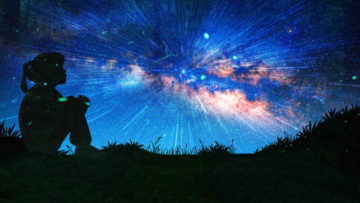 Beginning as early as the 1970s, astronomers noticed something funny going on with the galaxies in our nearby patch of the Universe. There was the usual and expected Hubble flow, the general recession of galaxies driven by the overall expansion of the Universe. But there seemed to be some vague directionality on top of that, as if all of the galaxies near us were also heading toward the same focal point.
Beginning as early as the 1970s, astronomers noticed something funny going on with the galaxies in our nearby patch of the Universe. There was the usual and expected Hubble flow, the general recession of galaxies driven by the overall expansion of the Universe. But there seemed to be some vague directionality on top of that, as if all of the galaxies near us were also heading toward the same focal point.
Astronomers debated whether this was a real effect or some artifact of Malmquist bias, the bias we get in our observations because bright galaxies are easier to observe than dim ones (for fans of statistics, it’s just another expression of a selection effect). It could be that a complete census of the nearby cosmos, including the much more numerous small and dim galaxies, would erase any apparent extra movement and return some sanity to the world.
But then came more detailed observations of the cosmic microwave background (CMB).
More here.
Review of Peter Turchin’s “End Times”
Branko Milanovic in his Substack newsletter:
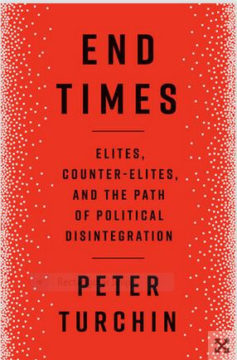 For almost two decades, Peter Turchin has been involved, with many colleagues and co-authors, in an epochal project: to figure out, using quantifiable evidence, what are the forces that lead to the rise, and more importantly, to the decline of nations, political turbulence and decay, and revolutions. This has resulted in the creation of an enormous database (CrisisDB) covering multitude of nations and empires over centuries, and several volumes of Turchin’s writings (e.g., Secular Cycles (with Sergey Nefedov), War and Peace and War; I have read the former, not the latter).
For almost two decades, Peter Turchin has been involved, with many colleagues and co-authors, in an epochal project: to figure out, using quantifiable evidence, what are the forces that lead to the rise, and more importantly, to the decline of nations, political turbulence and decay, and revolutions. This has resulted in the creation of an enormous database (CrisisDB) covering multitude of nations and empires over centuries, and several volumes of Turchin’s writings (e.g., Secular Cycles (with Sergey Nefedov), War and Peace and War; I have read the former, not the latter).
End Times is Turchin’s attempt to break to the broader public what he has learned from the complex work in the field that he calls Cliodynamics. It is a work of “haute vulgarisation” even if the adjective “haute” is sometimes inapplicable since, in his attempt to reach the broadest possible audience, Turchin has at times stylistically gone much too low assuming almost no prior knowledge amongst his readers. But this is a question of style.
What is the substance?
More here.
Rebecca Newberger Goldstein – Toward a Science of Consciousness
The Discontents Of Francis Fukuyama
Daniel Bessner at The Nation:
 The end of the Cold War was supposed to usher in a better world. After four decades of struggle, the great battle between liberalism and Bolshevism had ended in the former’s decisive victory. Many in the West hoped that liberalism would now have free rein to shape events around the world. Utopia, at least of a liberal form, was finally within humanity’s grasp.
The end of the Cold War was supposed to usher in a better world. After four decades of struggle, the great battle between liberalism and Bolshevism had ended in the former’s decisive victory. Many in the West hoped that liberalism would now have free rein to shape events around the world. Utopia, at least of a liberal form, was finally within humanity’s grasp.
No essay embodied this feeling more than “The End of History?” Published in 1989 in The National Interest and written by a then-unknown State Department official named Francis Fukuyama, the piece proffered a simple three-step argument. First, Fukuyama claimed that throughout the world, people had decided that liberal democratic capitalism was superior to the authoritarian communism produced by Bolshevism and Maoism. Second, he argued that liberalism’s triumph meant that “History”—understood as the struggle between rival ideologies—had ended. Finally, he concluded that, over time, many nations that hadn’t yet become liberal capitalist democracies would inevitably do so, and that this would be good for humankind.
more here.
“Jo Mein Jaanti Bichhrat Hein Sayyan” sung by Farid Ayaz & Abu Muhammad Qawwal
An Interview With Abraham Verghese
Abraham Verghese at the NY Times:
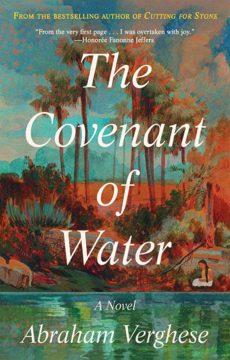 Describe your ideal reading experience (when, where, what, how).
Describe your ideal reading experience (when, where, what, how).
Ideal would be on a houseboat in Kerala, motoring down the backwaters with my own cook and boatman and sipping toddy; or else under an umbrella at some warm beach while digitally disconnected. But I’ll settle for an uninterrupted hour or two wherever I can find it, and that’s typically late at night, or often on a plane. During the height of the Covid pandemic (whose only silver lining was what it did for reading and for baking sourdough bread), I was biking or walking to work and I got into audiobooks. I could seamlessly pick up where I left off on the physical page the previous night. Listening to a book has made me even more attuned to the sound of what I put on the page. It led me to audition for narrating the audiobook of “The Covenant of Water.” Happily, I got the role. (It’s harder than most people realize: One has to perform the book and convey who is speaking using pitch, tone and accent but without overdoing it. Five hours a day for two and a half weeks and communicating by sign language in the evenings to restore the voice.)
more here.
I Really Didn’t Want to Go: On the Goop cruise
Lauren Oyler in Harper’s:
 They told me they couldn’t offer me an interview with her at this time. Fine by me—I didn’t want to talk to her anyway. She talks a lot and doesn’t say much. A Financial Times profile published on the occasion of her fiftieth birthday suggested we have her to thank for spirulina, celebrity skin care lines, the good divorce, blended families, sex positivity, and dry skin brushing (just what it sounds like). I’ve also heard she made yoga happen. This is all obviously ridiculous, flatly ahistorical, except maybe the celebrity skin care line thing, but that doesn’t matter—even if someone thinks she’s done more harm than good, and that a lot of it is an upscale scam, they will comment, wearily, pragmatically, just a little bit enviously, that you have to respect it, don’t you, what she’s done. She has successfully integrated her imperial wellness company into American life. Memories of a time when gut health wasn’t something you discussed at parties are distant. Moms are microdosing. Vulnerability reigns. The countervailing spirit of resistance to quackery and “fake news” that characterized the Trump era is over, and eggs made of jade that you’re supposed to put in your vagina are still for sale. Everybody knows about the vagina eggs. The elderly know about them. People from Belgium know about them. What comes next, epochally, is still unclear. In the meantime, she has been, for some reason, partnering with a cruise line.
They told me they couldn’t offer me an interview with her at this time. Fine by me—I didn’t want to talk to her anyway. She talks a lot and doesn’t say much. A Financial Times profile published on the occasion of her fiftieth birthday suggested we have her to thank for spirulina, celebrity skin care lines, the good divorce, blended families, sex positivity, and dry skin brushing (just what it sounds like). I’ve also heard she made yoga happen. This is all obviously ridiculous, flatly ahistorical, except maybe the celebrity skin care line thing, but that doesn’t matter—even if someone thinks she’s done more harm than good, and that a lot of it is an upscale scam, they will comment, wearily, pragmatically, just a little bit enviously, that you have to respect it, don’t you, what she’s done. She has successfully integrated her imperial wellness company into American life. Memories of a time when gut health wasn’t something you discussed at parties are distant. Moms are microdosing. Vulnerability reigns. The countervailing spirit of resistance to quackery and “fake news” that characterized the Trump era is over, and eggs made of jade that you’re supposed to put in your vagina are still for sale. Everybody knows about the vagina eggs. The elderly know about them. People from Belgium know about them. What comes next, epochally, is still unclear. In the meantime, she has been, for some reason, partnering with a cruise line.
Last summer, I got an email from my editor asking, sneakily, among the how are you’s, “Have you ever thought about writing on wellness??” She was looking for someone to go on “the Goop cruise.” Like most female writers, I had thought about writing on wellness, mainly in terms of the free stuff I could get to do so. And for name recognition and potential hate-read appeal, a Goop assignment is the ne plus ultra of wellness writing. I don’t know anyone who uses the Goop skin care products, much less reads the graphomaniacal website or attends the “In Goop Health” summits, but I had a hunch that the products, the actual Goop, were nice.
More here.
50,000 Worms Tangled Up in a Ball Unravel in an Explosive Burst when a Predator Appears
Jack Tamisiea in Scientific American:
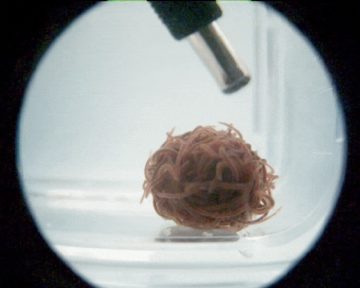 Anyone who’s grappled with jumbled headphones knows the difficulty of disentangling snarled cords. A tight knot is nothing for a California blackworm, however. These tiny worms twist together by the thousands to form tightly packed blobs reminiscent of a forkful of squirming spaghetti. While these tangles take minutes to form, intertwined blackworms can wriggle free in a matter of milliseconds. Now scientists have finally straightened out how these legless escape artists use only a simple collection of muscles and neurons to seamlessly slither out of tight tangles. “We thought that if worms can solve this untangling problem, so could we,” says Vishal Patil, an applied mathematician at Stanford University. In a study published today in the journal Science, Patil and his colleagues used mathematical simulations to pinpoint the movements blackworms use to rapidly untangle themselves.
Anyone who’s grappled with jumbled headphones knows the difficulty of disentangling snarled cords. A tight knot is nothing for a California blackworm, however. These tiny worms twist together by the thousands to form tightly packed blobs reminiscent of a forkful of squirming spaghetti. While these tangles take minutes to form, intertwined blackworms can wriggle free in a matter of milliseconds. Now scientists have finally straightened out how these legless escape artists use only a simple collection of muscles and neurons to seamlessly slither out of tight tangles. “We thought that if worms can solve this untangling problem, so could we,” says Vishal Patil, an applied mathematician at Stanford University. In a study published today in the journal Science, Patil and his colleagues used mathematical simulations to pinpoint the movements blackworms use to rapidly untangle themselves.
At just a couple of centimeters long, California blackworms (Lumbriculus variegatus) are easy to overlook. Yet these aquatic worms, which are common grub for aquarium fish, exemplify strength in numbers. To conserve their moisture or maintain their temperature, anywhere from five to 50,000 blackworms intermingle to form writhing blobs seemingly right out of a creature feature. While these tangles are tight, the earliest sign of a predatory diving beetle will send the fleshy worms squirming in all directions.
More here.
Thursday, April 27, 2023
A crop of new books attempts to explain the allure of conspiracy theories and the power of belief
Trevor Quirk in Guernica:
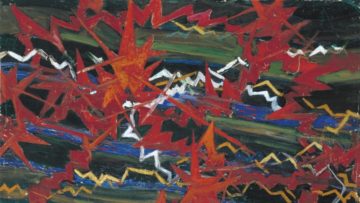 For the millions who were enraged, disgusted, and shocked by the Capitol riots of January 6, the enduring object of skepticism has been not so much the lie that provoked the riots but the believers themselves. A year out, and book publishers confirmed this, releasing titles that addressed the question still addling public consciousness: How can people believe this shit? A minority of rioters at the Capitol had nefarious intentions rooted in authentic ideology, but most of them conveyed no purpose other than to announce to the world that they believed — specifically, that the 2020 election was hijacked through an international conspiracy — and that nothing could sway their confidence. This belief possessed them, not the other way around.
For the millions who were enraged, disgusted, and shocked by the Capitol riots of January 6, the enduring object of skepticism has been not so much the lie that provoked the riots but the believers themselves. A year out, and book publishers confirmed this, releasing titles that addressed the question still addling public consciousness: How can people believe this shit? A minority of rioters at the Capitol had nefarious intentions rooted in authentic ideology, but most of them conveyed no purpose other than to announce to the world that they believed — specifically, that the 2020 election was hijacked through an international conspiracy — and that nothing could sway their confidence. This belief possessed them, not the other way around.
At first, I’d found the riots both terrifying and darkly hilarious, but those sentiments were soon overwon by a strange exasperation that has persisted ever since. It’s a feeling that has robbed me of my capacity to laugh at conspiracy theories — QAnon, chemtrails, lizardmen, whatever — and the people who espouse them. My exasperation is for lack of an explanation. I see Trump’s most devoted hellion, rampaging down the halls of power like a grade schooler after the bell, and I need to know the hidden causes of his dopey rebellion. To account for our new menagerie of conspiracy theories, I told myself, would be to reclaim the world from entropy, to snap experience neatly to the grid once again. I would use recent books as the basis for my account of conspiracy theories in the age of the internet. From their pages I would extract insights and errors like newspaper clippings, pin the marginal, bizarre, and seemingly irrelevant details to the corkboard of my mind, where I could spy eerie resonances, draw unseen connections. At last, I could reveal that our epistemic bedlam is as a Twombly canvas — messy but decipherable.
More here.
On the unexpected joys of Denglisch, Berlinglish & global Englisch
Alexander Wells in the European Review of Books:
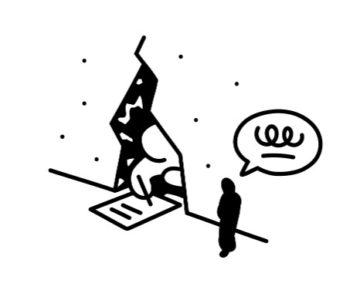 Whenever I leave my Berlin apartment, the first thing I see is a sign saying CHICKEN HAUS BURGER; the second is a café blackboard announcing: « You can’t buy happiness but you can buy CROIFFLE and that’s kind of the same thing. » A billboard advertises an upcoming film as « ein STATEMENT für GIRLPOWER »; one shop promises a wide range of Funsocken. Rather more disturbing — particularly here in Neukölln, a neighbourhood copiously populated by leftie Americans and families from the Middle East — is the Arabic-German barber shop called WHITE BOSS. And when I go downtown to the bookstore where I occasionally host readings, the only good coffee nearby is served by a place unbelievably named PURE ORIGINS.
Whenever I leave my Berlin apartment, the first thing I see is a sign saying CHICKEN HAUS BURGER; the second is a café blackboard announcing: « You can’t buy happiness but you can buy CROIFFLE and that’s kind of the same thing. » A billboard advertises an upcoming film as « ein STATEMENT für GIRLPOWER »; one shop promises a wide range of Funsocken. Rather more disturbing — particularly here in Neukölln, a neighbourhood copiously populated by leftie Americans and families from the Middle East — is the Arabic-German barber shop called WHITE BOSS. And when I go downtown to the bookstore where I occasionally host readings, the only good coffee nearby is served by a place unbelievably named PURE ORIGINS.
I am at my desk, red pen in hand, mulling over a question of usage. The German word for pedestrians is Fußgänger. Do Berlin expats know that? Have I ever overheard one say it? If the expats won’t understand it, I can’t leave it in this little news feature about traffic reform.
It’s a strange gig, editing pages for Berlin’s English-language print monthly.
More here.
The ‘Don’t Look Up’ Thinking That Could Doom Us With AI
Max Tegmark in Time:
 Suppose a large inbound asteroid were discovered, and we learned that half of all astronomers gave it at least 10% chance of causing human extinction, just as a similar asteroid exterminated the dinosaurs about 66 million years ago. Since we have such a long history of thinking about this threat and what to do about it, from scientific conferences to Hollywood blockbusters, you might expect humanity to shift into high gear with a deflection mission to steer it in a safer direction.
Suppose a large inbound asteroid were discovered, and we learned that half of all astronomers gave it at least 10% chance of causing human extinction, just as a similar asteroid exterminated the dinosaurs about 66 million years ago. Since we have such a long history of thinking about this threat and what to do about it, from scientific conferences to Hollywood blockbusters, you might expect humanity to shift into high gear with a deflection mission to steer it in a safer direction.
Sadly, I now feel that we’re living the movie “Don’t look up” for another existential threat: unaligned superintelligence. We may soon have to share our planet with more intelligent “minds” that care less about us than we cared about mammoths. A recent survey showed that half of AI researchers give AI at least 10% chance of causing human extinction. Since we have such a long history of thinking about this threat and what to do about it, from scientific conferences to Hollywood blockbusters, you might expect that humanity would shift into high gear with a mission to steer AI in a safer direction than out-of-control superintelligence. Think again: instead, the most influential responses have been a combination of denial, mockery, and resignation so darkly comical that it’s deserving of an Oscar.
More here.
Everyday Philosophy: Derek Parfit, Star Trek and the self
Nigel Warburton in The New European:
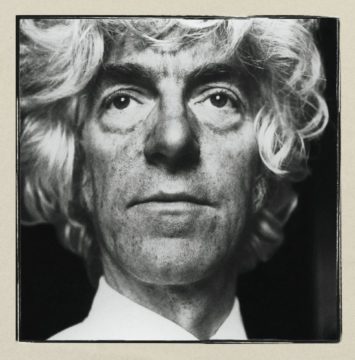 Philosophers can be quirky. Take Ludwig Wittgenstein. His rooms in Cambridge were bare except for two deck chairs, a camp bed, and sets of identical clothes in a wardrobe. When asked what he wanted to eat, he said he didn’t care just so long as it was the same thing every day. He refused to lunch at high table in Trinity College, not wanting to set himself literally above other people. But then he had a special table made at the same height as that of the students so he could sit alone.
Philosophers can be quirky. Take Ludwig Wittgenstein. His rooms in Cambridge were bare except for two deck chairs, a camp bed, and sets of identical clothes in a wardrobe. When asked what he wanted to eat, he said he didn’t care just so long as it was the same thing every day. He refused to lunch at high table in Trinity College, not wanting to set himself literally above other people. But then he had a special table made at the same height as that of the students so he could sit alone.
The far less famous Oxford philosopher Derek Parfit, who died at the beginning of 2017, was even quirkier than Wittgenstein as readers of David Edmonds’ very readable biography published by Princeton University Press last week will appreciate.
By always wearing grey trousers, a white shirt, and a red tie, he avoided wasting time thinking about what to wear. He cleaned his teeth obsessively for over an hour a day, reading all the time.
More here.
